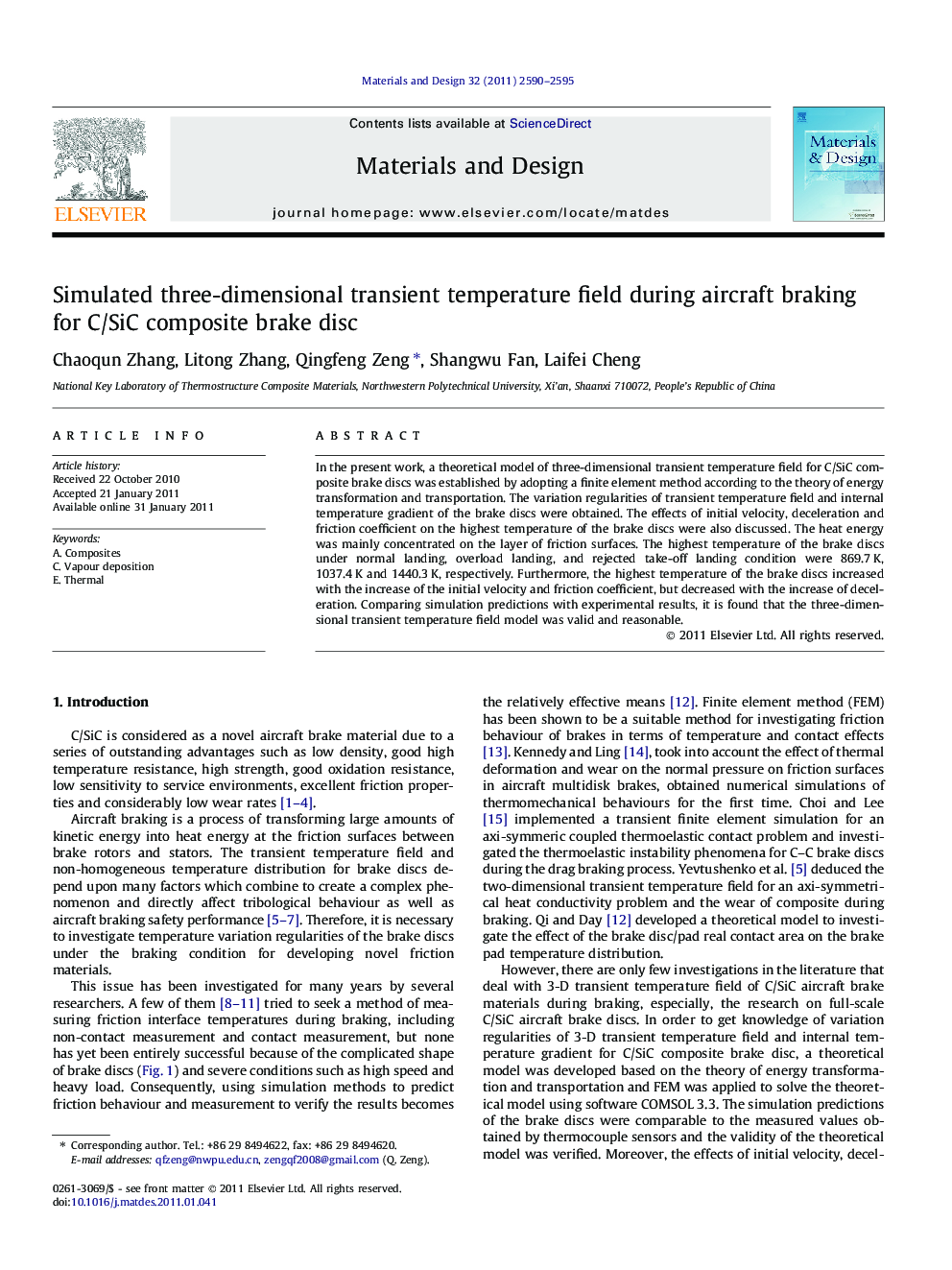| Article ID | Journal | Published Year | Pages | File Type |
|---|---|---|---|---|
| 831263 | Materials & Design (1980-2015) | 2011 | 6 Pages |
In the present work, a theoretical model of three-dimensional transient temperature field for C/SiC composite brake discs was established by adopting a finite element method according to the theory of energy transformation and transportation. The variation regularities of transient temperature field and internal temperature gradient of the brake discs were obtained. The effects of initial velocity, deceleration and friction coefficient on the highest temperature of the brake discs were also discussed. The heat energy was mainly concentrated on the layer of friction surfaces. The highest temperature of the brake discs under normal landing, overload landing, and rejected take-off landing condition were 869.7 K, 1037.4 K and 1440.3 K, respectively. Furthermore, the highest temperature of the brake discs increased with the increase of the initial velocity and friction coefficient, but decreased with the increase of deceleration. Comparing simulation predictions with experimental results, it is found that the three-dimensional transient temperature field model was valid and reasonable.
Research highlights► A friction model for C/SiC composite aircraft brake disc was firstly established. ► The temperature of the friction surface is higher than that inside of the discs. ► The temperature at rejected take-off landing is extremely as high as 1440.3 K. ► The higher the initial velocity and friction coefficient, the higher the temperature.
